
![]()
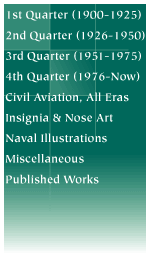
Johannisthal Eagle: The Albatros D.III and D.V/Va
By Bob Pearson
With the success of the Albatros D.I and D.II, designer Dipl-Ing Robert Thelan began looking for ways to improve on it. In an attempt to improve on maneuverability the French Nieuport's sesquiplane wing planform was adopted. Sadly this wasn't totally for the best, as a number of lower wing failures were to occur and no completely satifactory fix was developed. Despite this, the majority of the German aces scored victories while flying the Albatros Scouts - von Richthofen actually downed 60 of his victories while flying the various models of the D.II/D.III/D.V.
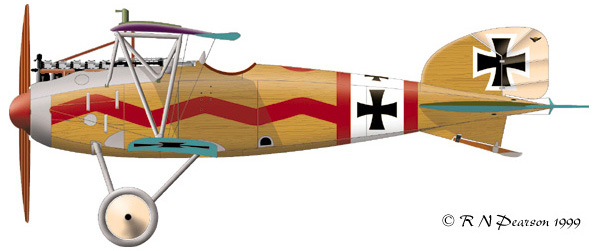
Albatros D.III
Jasta 11
Douai aerodrome
April 1917
This D.III has stumped researchers for years. It can be seen in a famous lineup of Jasta 11 D.IIIs during "Bloody April" 1917 along with that flown by Manfred von Richthofen. Although the pilot is unknown, it may have been used by Ltn Konstantin Krefft, the technical officer of Jasta 11. Basically in an ex-works finish of plain varnished fuselage; CDL rudder (with Albatros logo); Although shown as mauve/green, Three colour (Light green/dark green/ red-brown) upper wings are more likely; light blue lower wing surface; and light grey metal work. The pilot's marking of a wavy red stripe repeats on the turtledeck.
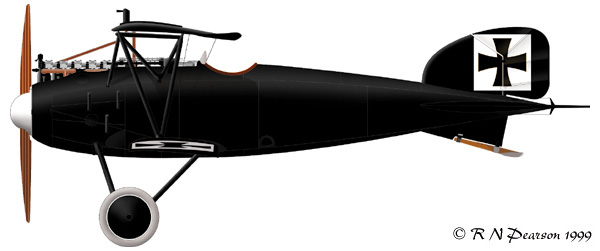
Albatros D.III 2274/16
Oblt. Adolf von Tutschek
OC, Jasta 12
April 1917
Another D.III seen in April 1917 is this overall black one flwon by Oblt von Tutcheck, commanding officer of Jasta 12. During "Bloody April" he scored victories over two RFC FE2s, while his ultimate total was 27. In February 1918 he was selected to command the second of the 'Flying Circuses' - Jagdgeschwader Nr.II which he did until his death in action on 15 March 1918. His successor at JG.II was Rudolf Berthold.
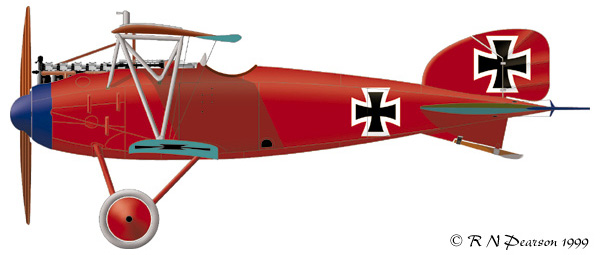
Albatros D.III
Ltn Otto Brauneck
Jasta 11
Marckebeeke Aerodrome
July 1917
The only overall red aircraft at Jasta 11 was that flown by von Richthofen, others in the unit would show other colours in varying degrees to identify individual pilots to the rest of the flight. Displaying the classic Jasta 11 colouring of red fuselage, tail, struts and wheel covers, Ltn Brauneck's D.III also has his identifying markings of a blue nose and elevators. Wings are in three-colour uppers, blue bottoms.
Brauneck came to Jasta 11 on 20 April 17 from Jasta 25 where he haad scored seven victories. He would score another three more at Js.11 before being killed in combat with an FE2b of No.20 Sqn RFC on 26 July 1917
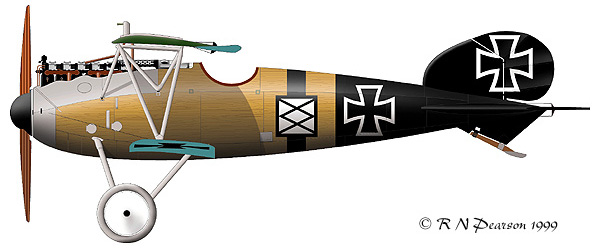
Albatros D.V
Ltn Carl Meierdirks
Jasta 12
The unit marking of Jasta 12 while under von Tutschek was a black rear fuselage and tail. Individual pilots were identified by a marking unique to their aircraft. Meierdirks later took command of Jasta 55 serving in Palestine, where he was killed over Jericho on 1 May 1918.
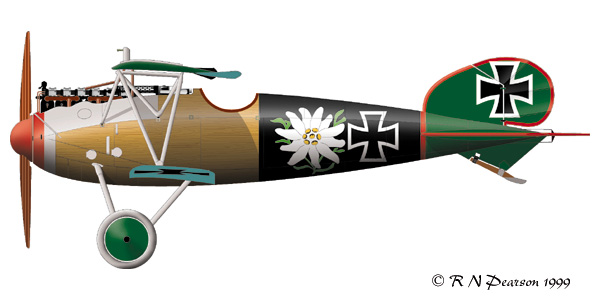
Albatros D.V
Ltn Paul Baumer
Jasta 5
Boistrancourt aerodrome
January 1918
Seen here is Baumer's D.V as based on research by Robert Karr. Previous versions have shown the band behind the edelweiss and cross as red, however Robert believes it to have been black. For an overview of Baumer's career see Tom Cleaver's article on the Albatros Fighters in Internet Modeler's May 1999 issue.
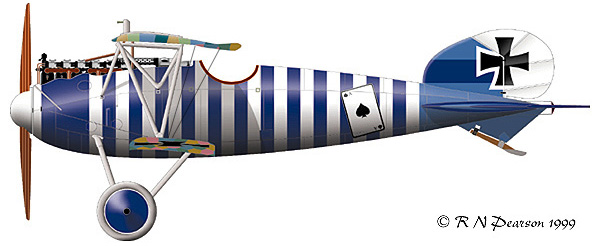
Albatros D.Va
Ltn Hans Bohning
Jasta 79b
Villiers-le-sec aerodrome
Spring 1918
Coming to Jasta 79b from Jasta 76 on 20 january 1918, Bohning commanded Jasta 79b until his wounding on 20 September. Upon his recovery he took over Jasta 32b on 1 November, ending the war with 17 victories. Wings are in 4 colour lozenge.
References:
Among others, the following were consulted:
Various issues of OVER THE FRONT and CROSS AND COCKADE
Above the Lines: Franks/Bailey & Guest
Dan-San Abbott's research
Robert Karr's research